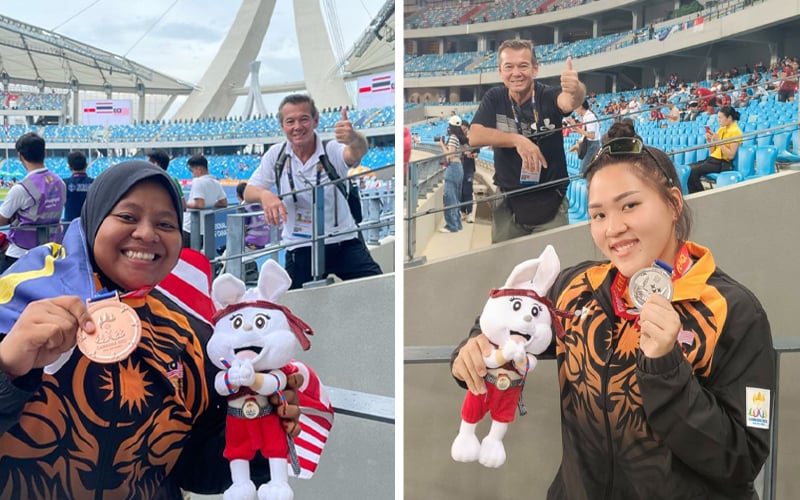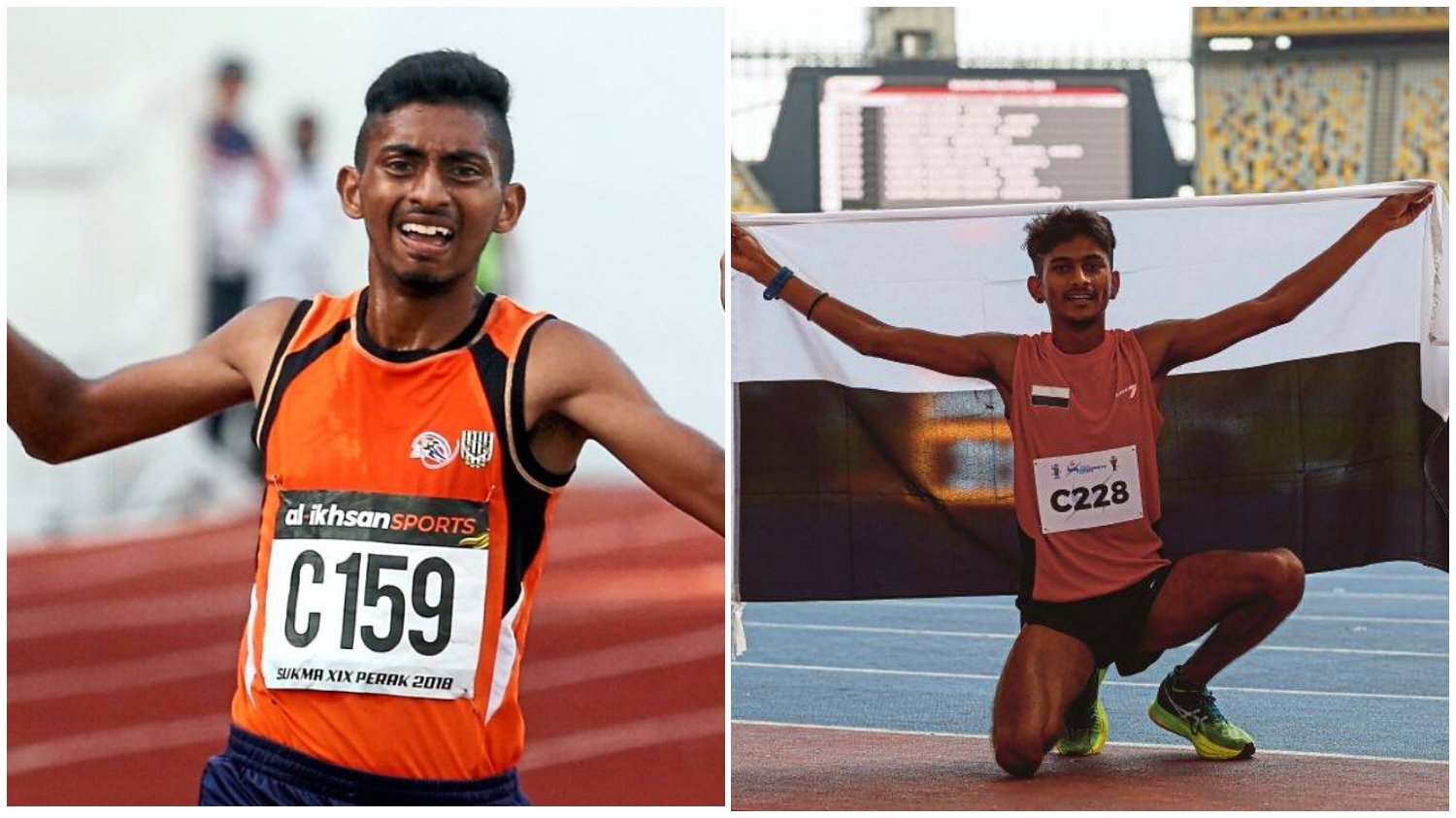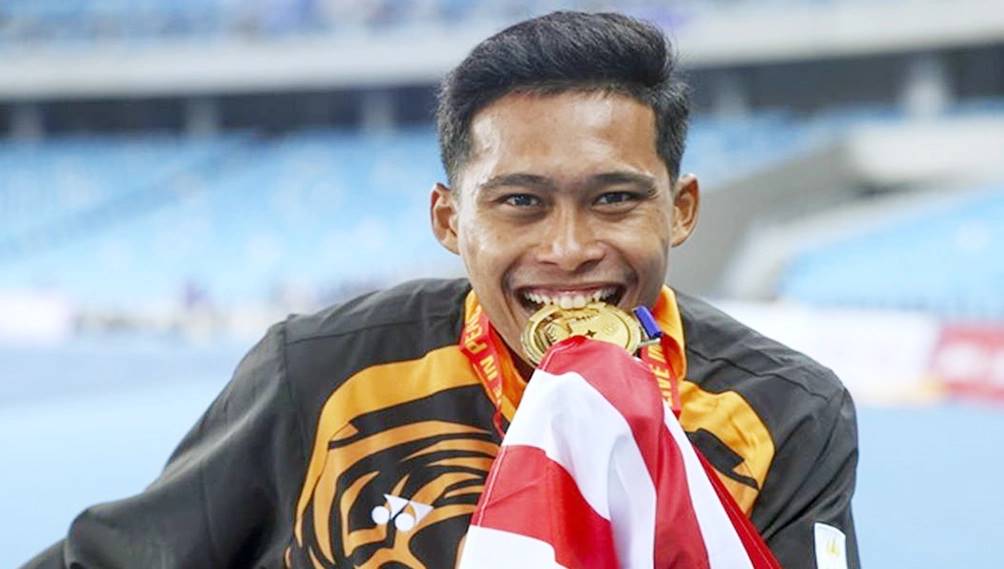
KUALA LUMPUR: Malaysia’s top men long-distance runners delivered a shocker in the 10,000m at the recent SEA Games, finishing more than six seconds slower than the national women’s record set 29 years ago.
Ikbolasen Kamal Hussain and S Poo Vasanthan clocked 34:14.55 and 34:20.14 respectively, a far cry from P Jayanthi’s mark of 33:50.80 set in 1994 in Brussels, Belgium.
Both the runners had previously run faster, so did the SEA Games debutants get proper and sufficient training?
Malaysian Athletics Federation (MAF) coaching committee chairman Mark Ling said their performances were a reflection of the serious challenges facing the sport in the country.

In giving an assessment of Malaysian athletics in Phnom Penh, he told FMT: “No one likes not doing their best. No one should doubt the commitment or effort of our athletes.”
He said this was not a time for blame and scapegoating, but an opportunity to make the changes required, and for everyone to genuinely work together to rise to the international challenge.
Middle and long distance running blow
According to Ling, there was no coach for the last two years for middle and long distance running because of little coaching structure in MAF.
“When the new MAF administration came in last year, there was no accountability and the overall governance of coaches was lacking.
“We now have two coaches and are looking to expand the coaching programme with tie-ups with Kenya and China. At the same time, we are identifying men and women runners in middle and long distance,” he said.
Under-pressure runners

Ling said “very little work” had gone into cousins Vasanthan, 25, and Ikbolasen, 20, who were the best athletes the country had in the 5000m and 10,000m.
They only began training for the SEA Games in April, and in the absence of top runners in the region, Vasanthan took gold in the 5000m at the Singapore Open, ahead of Ikbolasen and another Malaysian, Daren James Nair.
At the SEA Games, Ikbolasen finished 10th in the 5000m and took the same spot in the 10,000m ahead of Vasanthan.
Ling attributed their poor showing to a lack of confidence and maturity in running at that level.
“We did not expect them to win, and wanted them to go in for the exposure, knowing they have great potential and huge dedication,” he said.
The duo, from Raub, Pahang, had trained under Vasanathan’s father, P Subramaniam, before they came under the national sports council (NSC) programme.
Ling said they had never been trained for track events and were running in road races as part of their income. Subramaniam is a part-time factory worker while Ikbolasen’s father works at a farm in Cameron Highlands with no fixed salary.
“The boys have a long way to go and need to be put in an environment where they understand every aspect of running, and for that, they have to be provided every assistance.
“Our job is to provide every athlete with everything they need for them to maintain their spirit. If we don’t give them the light for their spirit, we will fail,” he said.
Limited time, limited training, limited competitions
Ling said MAF had about three months of dedicated training programmes compared to other countries that had them for a longer period.
The setback, he said, was due to delays in funding, and in the engagement of athletes and coaches. “Because of the shortcomings, the physical attributes of the athletes were not at their peak.”
He said everyone tried their best with the limited time, limited training, limited exposure and limited competitions over the preparation period.

Despite the challenges, two national records were set in men’s 400m (46.34s) by unheralded Umar Osman, who won gold and broke the 22-year-old mark, and by the women’s 4x100m relay team (44.58s) who took bronze.
Hammer thrower Grace Wong set a games record, while four women recorded personal best marks.
Malaysia fielded 64 athletes, winning five gold medals out of the 49 at stake, three silver and 11 bronze, and were fourth in the athletics medal tally. In Hanoi last year, the haul was five gold, three silver and eight bronze medals.
“Athletics brings the biggest number of gold medals at the games, and we are lagging behind because over the years the system has been in a shambles,” said Ling.
Why the 10-gold target?
Ling said national athletics head coach Zaki Sadri had told Olympic Council of Malaysia (OCM) president Norza Zakaria that the target was five gold medals at a meeting on April 7.
As forecast, gold medals were delivered by Irfan Shamsuddin (men’s discus), Andre Anura Anwar (men’s triple), Grace Wong (women’s hammer) and Shereen Vallabouy (women’s 400m) while Jackie Wong fell short in the hammer throw, taking silver.
He said the much-talked about 10 gold target was the aspiration of MAF president Shahidan Kassim.
On whether he was in favour of targets, which some countries do not practise, he said: “It’s stressful, and puts the pressure on the athletes and coaches.
“We should do away with where are we going to be at the next big event because we will be pressured every single time.”
Fixing Malaysian athletics
Ling said athletics needed major restructuring to regain Malaysia’s position as a regional powerhouse.
He disclosed that MAF was in discussion with a foreign technical director, who is familiar with athletics in Asia, to breathe life into elite, coaching and development programmes.
“We need him to begin soon to evaluate whether athletes at all levels are being provided with the right kind of coaching, and to propose improvements to training schemes,” he said.
He said he was confident that decentralisation of training, especially in Sabah and Sarawak, which are seen as strong bases for athletics, will widen the pool of talent.
To ensure uninterrupted funding, he said sponsorship will be broken into the different segments of athletics – track, throws and jumps – to realistically achieve corporate support.
“Medals cost money, and glory is not cheap,” said Ling, who is president and executive director of Edra Power Holdings Sdn Bhd, Malaysia’s second-largest independent power producer.
Asked whether local athletes had enough competitions both locally and overseas, he said: “Sadly no, and while working towards having more championships in the country, we should look at continuous shared programmes with our regional counterparts.
“If we don’t have competitions for throws, such as hammer, or don’t have the grounds for it, then let’s focus on where these events are being held regionally, and where these training camps are.
“I don’t like the idea that we are setting the programme for the next SEA Games, but we should train as if every month is going to have a major competition,” he said.
Can the glory days of athletics be revived?
“We can’t because from the 60s to the 90s, there was a well-structured system that had active clubs and events like the inter-bank meets.
“Why aren’t we asking why have we destroyed all that? We destroyed the core structure that allowed talents to be developed and prosper.
“All these gateways have been shut, and we are now reduced to dependencies.
“To make Malaysia an athletics force again, we must be united to recognise the limitations, and must fix issues with honesty and accountability,” said Ling. - FMT


No comments:
Post a Comment
Note: Only a member of this blog may post a comment.